Backpacking Gear Tips: 15 Beginner-Friendly Ways to Drop Weight (Without Breaking the Bank)

To many new backpackers, time spent on the trail can seem like a chore. You load up your heavy backpack with 40 pounds of gear until you’re almost falling over backwards, and then you do a death march down the trail until you reach camp. But, what if I told you that with a little bit of know-how, you can lighten your load and actually enjoy the hike? One of the best ways a beginner backpacker can improve their experience is to start looking for ways to carry less weight in your backpack. With a lighter load, you can hike farther and faster, see more of the backcountry and do it all with less strain and exhaustion. But getting started with ultralight can seem really intimidating. Ultralight gear tends to be expensive, hard to shop for and confusing to understand. To anyone just starting out, it might seem like you need a degree in Materials Engineering – plus a very deep bank account – to sift through all of the advice. Fortunately, it doesn’t have to be all about carbon fiber and titanium. That’s why I put together a list of easy ways to get started with lightening your load – for cheaper than you might expect. I tried to make this a list of only the most beginner-friendly ways to save weight (and cost) when gearing up for your next big backpacking trip.
1. Trail Running Shoes instead of Leather Hiking Boots

Weight Savings: 1.5 pounds (times five!)
Cost Savings: $120 Studies have shown that carrying an extra one pound on your foot tires you out as much as carrying five extra pounds on your back. This makes footwear a great place to shave weight. While traditionally, hikers have preferred tall, heavier boots for their “ankle protection,” there’s a growing school of thought that it is actually better to let ankle joints handle uneven terrain instead of keeping them rigid and sending the shock up into the knees and hips. Plus, lighter shoes break in faster, are more enjoyable to walk in, and will breathe better, making it less likely that you’ll get hotspots or blisters. My recommendation: New Balance Leadville v3.
2. Rain Hoodie instead of Waterproof-Breathable Jacket

Weight Savings: 10 ounces
Cost Savings: $80 Anyone who has spent more than a few hours outdoors in the rain knows that you will eventually get wet, no matter what you’re wearing. Those expensive, waterproof breathable jackets will either wet through, or you’ll sweat them out from the inside. So why pay so much more for “technology” that doesn’t really keep you dry and weighs twice as much? Lightweight rain hoodies and “windshirts” offer slightly less protection but weigh (and cost) much less than heavy duty, 3-layer Goretex shells. Plus they are much more breathable, so you can actually hike in them without sweating up a storm. They’re perfect for hiking or hanging around camp in light to moderate rain without ending up drenched in sweat. My recommendation: Outdoor Research Helium II Jacket.
3. Smaller Backpack instead of Extended Trip Pack

Weight Savings: 2 pounds
Cost Savings: $150 The more space you have in your backpack, the more you’re tempted to carry. Most backpacks don’t load very well unless they’re mostly full, so buying a large pack means you’ll almost certainly end up carrying more than if you had bought a smaller one. Having a smaller backpack forces to be smart about what you bring, and is a great foundation for going lighter. If most of your trips are only 3-4 days max, ditch the 70L+ bag and go with something with 40 - 50 liters of carrying capacity.
My recommendation: Osprey Talon 44 Pack.
4. Garbage Bag instead of Pack Cover

Weight Savings: 4 ounces
Cost Savings: $30 A garbage bag is cheaper than a pack cover since you already have a dozen under your kitchen sink. Unlike a pack cover, the garbage bags can go on the inside of your pack, with your gear inside. This allows you to cinch down the top to seal out rain, and also makes it easier to keep the inside of your bag clean in case of spills. The only real downside is that the outside of your pack can get wet (and heavier) if it’s exposed to lots of rain.
5. Duct Tape instead of Sewing Repair Kit

Weight Savings: 6 ounces
Cost Savings: $20 A few feet of heavy-duty tape is all that you really need to fix most gear problems or malfunctions. From boots to backpacks, rain flies to sleeping pads, duct tape really does fix it all. In a pinch, you can even use it to help seal wounds, prevent blisters, stabilize joints and help with a number of other backcountry first aid tasks. Granted, once you get back to the trailhead, you may want to take a look at actually fixing the problem, but a yard of duct tape wrapped around a hiking pole, flashlight or water bottle can get you pretty far. My recommendation: Gorilla Tape.
6. Homemade First Aid Kit instead of a Pre-Made One

Weight Savings: 1.5 pounds
Cost Savings: $50 Some backpackers carry a first aid kit as if they’re a combat medic heading into battle. A common theme in ultralight is that you can’t possibly prepare for every “what-if” scenario, so just focus on the ones that you’re most likely to encounter. You should think about the actual potential medical problems you’ll run into on your trip and prepare for those. I’ll be doing a full guide on first aid kits soon, so subscribe if you want to learn what you really should (and shouldn’t) be carrying.
7. Permethrin-Treated Clothing instead of Bug Spray

Weight Savings: 4 ounces
Cost Savings: $5 Permethrin is the “secret ingredient” embedded in the bug repellent clothing you see in the stores. It only take a few minutes to spray it on your clothing at home outside. Once it dries, there’s no smell or residue and it lasts for several washes before needing to be reapplied. Think about treating your long-sleeved items that you’ll wear around camp, as well as hats and socks. Any garment you already own can become “bug proof” and now you won’t have to carry anything to fend off the bugs. You can also try to avoid camping in high-traffic campsites near water, where bugs tend to thrive.
My recommendation: Sawyer 12oz Permethrin Trigger Spray.
8. Travel-Sized Bottles of Gels instead of Full-Sized
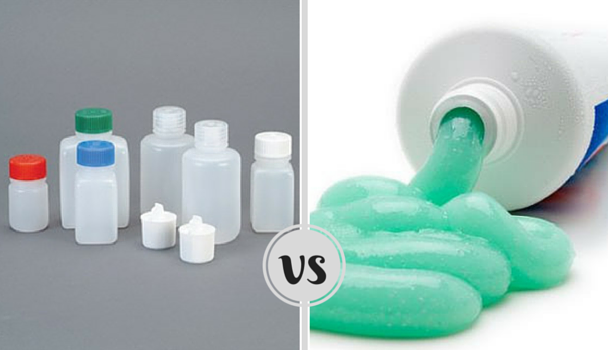
Weight Savings: 8 ounces
Cost Savings: $20 There’s no way you’re going to go through an entire bottle of sunscreen, toothpaste or hand sanitizer on your trip, so why bring it all? Travel-sized bottles are great for most trips. You can save them when they’re empty and simply refill from the larger bottles you already have in your home. My recommendation: Nalgene Small Travel Kit.
9. Pocket Stove instead of Full Cooking System
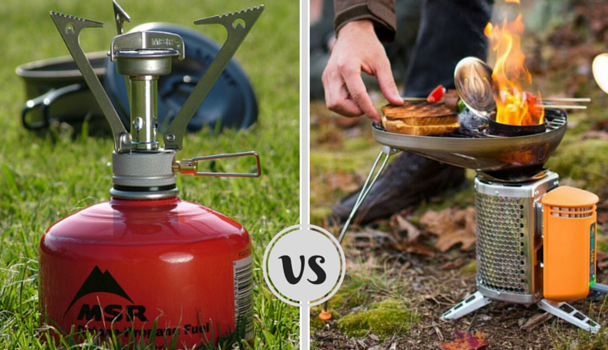
Weight Savings: 7 ounces
Cost Savings: $60 The essential parts of a stove are the fuel canister and a burner, why would you need anything else? With a pocket stove, you simple screw the burner directly onto your fuel canister and place the pot on top of that, simple! Make sure to bring a lighter and practice lighting the stove before you head out into the backcountry with it. You’ll also need to pick up a canister of fuel at you local outfitters, since it can’t be shipped from online retailers. My recommendation: MSR PocketRocket.
10. Small Aluminum Pot instead of Steel Pot Sets
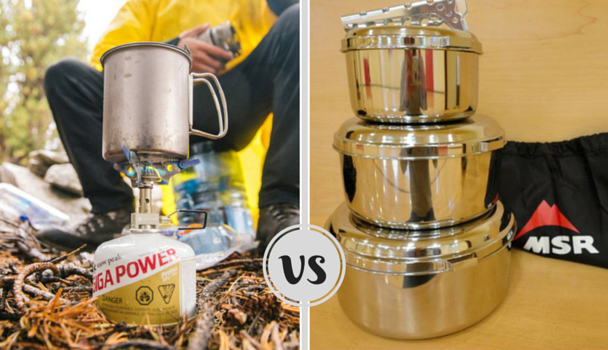
Weight Savings: 2.5 pounds
Cost Savings: $50 When planning your backpacking meals, one of your considerations should be how easy it is to prepare. Fortunately, there are tons of delicious meal options you can make with only 2-3 cups of boiling water and a pot. Just bring the water to a boil, add your carb (pasta, rice, couscous, etc), stir your protein and sauce in on top and voila! A simple, one pot meal. Much lighter than carrying a full pot set, and easier to clean up as well. My recommendation: Snow Peak 900.
11. Spork instead of Full Utensils, Plates and Bowls
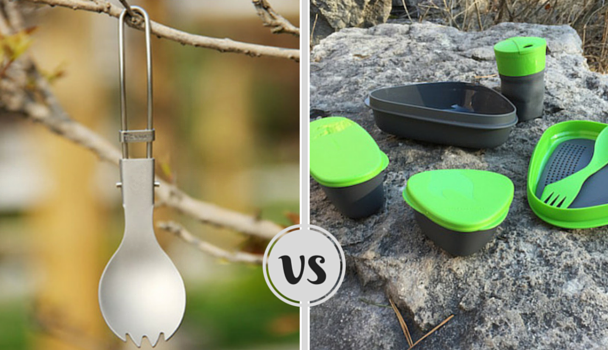
Weight Savings: 12 ounces
Cost Savings: $25 When it comes to cookware in the backcountry, simpler is better since it means less mess and cleanup afterwards. If you’re by yourself or in a small group, just eat straight out of the cooking pot. I’ve found plates to be especially useless in the backcountry. I’ve still never used the aluminum ones I got back in middle school. For ultra-cheap, grab some plastic take-out utensils from a local restaurant. My recommendation: Sea to Summit Ultralight Spork.
12. Sawyer Mini instead of Traditional Water Pump
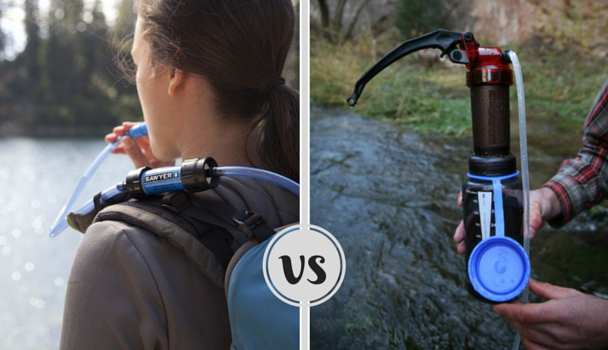
Weight Savings: 14 ounces
Cost Savings: $65 Sawyer minis are like a less-awkward Life Straw, a very simple, self-contained water filter where dirty water is pulled in from one end and comes out clean on the other end. Water can be pulled through with gravity, or by simply sucking it through the filter. This saves tons of time and effort over more traditional hand-pump filters. Using a small, suction powered filter also allows you to fill at a water source and keep right on hiking, instead of sitting there and pumping for 15 minutes. They’re also easier to clean and service in the backcountry.
My recommendation: Sawyer Mini Water Filtration System.
13. Soft-Sided Water Bladder instead of Metal Bottle
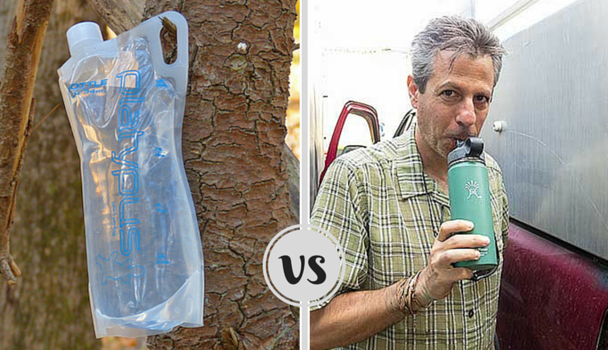
Weight Savings: 14 ounces
Cost Savings: $25 A soft-sided squeeze bag water bottle weighs much less than even a plastic nalgene, let alone a metal, vacuum-sealed bottle. But it still hold the same amount of water. High-quality ones can even hold boiling liquids and take a beating without leaking. Plus, they roll up and disappear when you’re not using them. My recommendation: Platypus PlusBottle 34oz Water Bottle.
14. 2 Liters of Water Carrying Capacity instead of 3L+
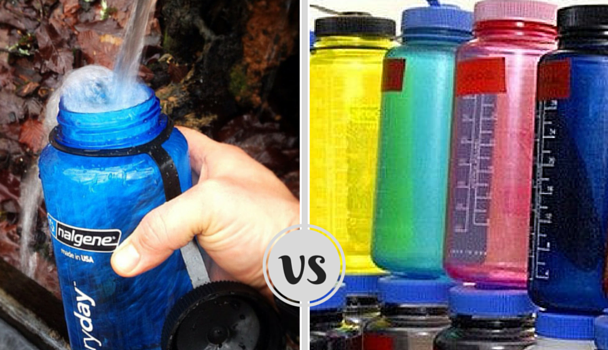
Weight Savings: 2.2 pounds per liter
Cost Savings: $20 At 2.2 pounds per liter, water is one of the heaviest possible things you can carry on a backpacking trip. There’s a reason most backpacking meals are “dehydrated” to remove all that weight. You don’t need to carry enough water to keep a small Little League team well-hydrated. Carrying one less liter of water can make your entire pack 15% lighter. Unless you’re really hiking in the desert, chances are you’ll pass 2-3 water sources per day where you can easily stop and refill. Plus, if you have a quick suction filter, you can fill up your water bottle and chug it down at the water source, and then fill a bit more to tide you over until the next one. This helps you avoid having to hump around excess water and goes a long way to lightening your load.
15. Small Folding Knife instead of Multi-Tool
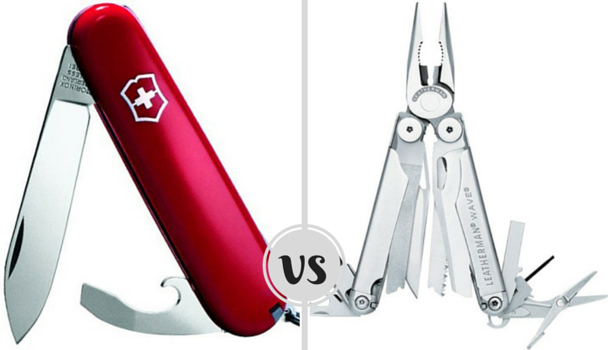
Weight Savings: 8 ounces
Cost Savings: $75 One of the most iconic pieces of backcountry gear is the simple blade, useful for all manner of camp tasks. But for some reason, many backpackers think that they’ll also need to pack in 3 screwdrivers, pliers, a wire-stripper and an awl. When backcountry camping, I’ve really never needed more than 2-3” inches of blade for cutting cordage and wedges of cheese. My half-pound multitool was one of the first things I dropped from my bag when I started getting serious about dropping weight.
My recommendation: Bantam by Victorinox (pictured).
Source post by : https://adventures.hartleybrody.com/backpacking-gear-tips/
-Juanita
#backpaking #traveler